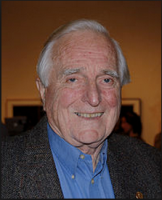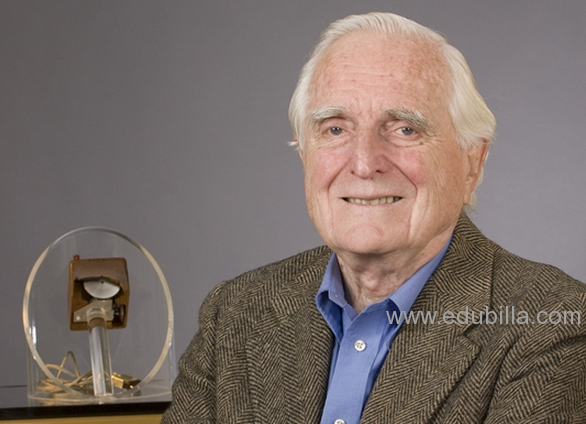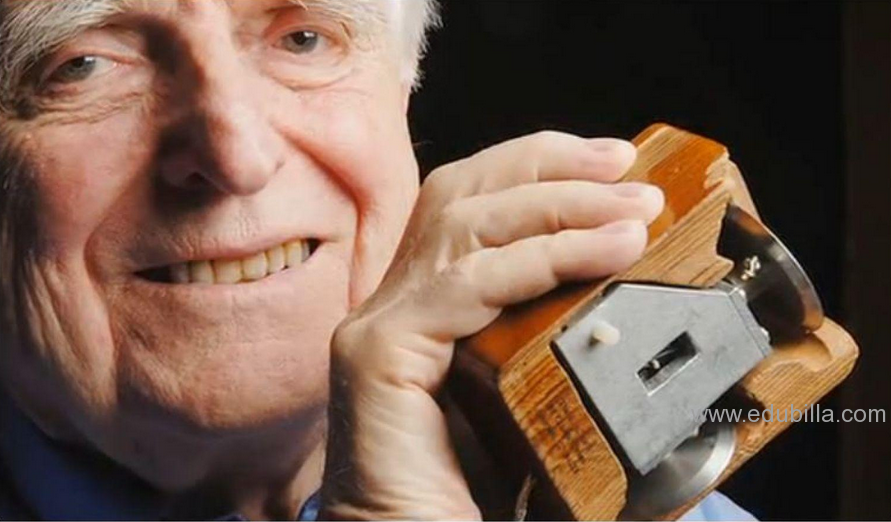










Douglas C. Engelbart was a pioneer in the design of interactive computer environments best known for inventing the computer mouse in 1964.
Synopsis
Born on January 25, 1925, in Portland, Oregon, Douglas C. Engelbart was a pioneer in the design of interactive computer environments who invented the computer mouse in 1964. He also created the first two-dimensional editing system, and was the first to demonstrate the use of mixed text-graphics and shared-screen viewing. He was director of SRI International's Augmentation Research Center in Palo Alto and founded Stanford University's Bootstrap Project. Engelbart died in Atherton, California, on July 2, 2013, at age 88.
Early Life and Career
A pioneer in the design of interactive computer environments, Douglas Carl Engelbart was born to Carl and Gladys Engelbart on January 25, 1925, in Portland, Oregon. He had two siblings: An older sister, Dorianne Engelbart Vadnais (born in 1922), and a younger brother, David Engelbart (born in 1927). After graduating from Franklin High School in Portland in 1942, Engelbart enrolled at Oregon State College (Oregon State University) in Corvallis, where he studied electrical engineering.
Drafted into the U.S. Army as World War II came to close, the future inventor worked as a radar technician in the Philippines for two years before returning to Oregon State. Not long after graduating with a bachelor's degree in 1948, Engelbart landed a position at California's Ames Research Center, a government aerospace laboratory run by the National Advisory Committee on Aeronautics (a precursor to NASA).
Computer Design Pioneer
Douglas C. Engelbart went on to earn a Ph.D. in electrical engineering from the University of California, Berkeley, in 1955. After returning to the school for a stint as an acting assistant professor, Engelbart began a career at the Stanford Research Institute (later renamed SRI International). Around this same time, he began focusing on an approach that he termed "bootstrapping," in which he asserted the fields of engineering and science would be greatly improved if computer power were shared among researchers.
In the early 1960s, Engelbart founded SRI International's Augmentation Research Center in Palo Alto in an effort to further research information processing and computer-sharing tools and methods. Soon after, Engelbart designed and was the primary developer of the oN-Line System, also known as NLS, a revolutionary computer-sharing system.
In 1964, Engelbart conceptualized and created the first design for the computer mouse. While Engelbart believed that the point-and-click computer device could be equipped with up to 10 buttons, the first mouse would have just three. The inventor went on to create the first two-dimensional editing system, and was the first to demonstrate the use of mixed text-graphics and shared-screen viewing.
Engelbart served as director of the Augmentation Research Center from its inception until 1977. The center was transferred to Tymshare in 1978, with NLS being renamed "Augment. In 1989, Engelbart founded the Bootstrap Project at Stanford University.
Later Years and Legacy
Engelbart received several honors throughout his lifetime, including the Coors American Ingenuity Award (1991), the Yuri Rubinsky Memorial Award (1995), the IEEE John von Neumann Medal, the Lemelson-MIT Prize (1997), the Turing Award (1997) and the National Medal of Technology and Innovation (2000). Unfortunately, Engelbart never received any royalties for inventing the computer mouse, for which he's now best known.
Engelbart died of kidney failure in Atherton, California, on July 2, 2013. He was 88.
He was survived by his second wife, Karen O’Leary Engelbart; daughters Gerda, Diana and Christina; son Norman; and nine grandchildren. (His first wife, Ballard Fish Engelbart, died of ovarian cancer in 1997.)
National Medal of Technology (2000),
Lemelson-MIT Prize,
Turing Award (1997)
Lovelace Medal,
Norbert Wiener Award for Social and Professional Responsibility,
Computer History Museum Fellow Award (2005)

